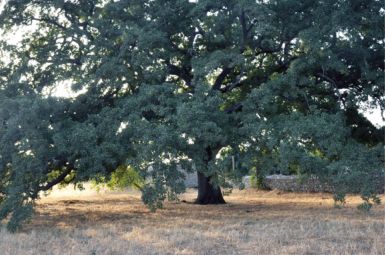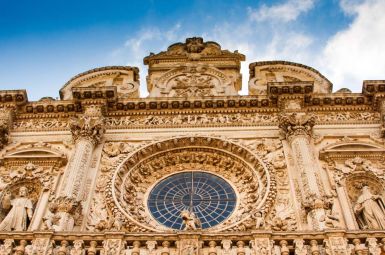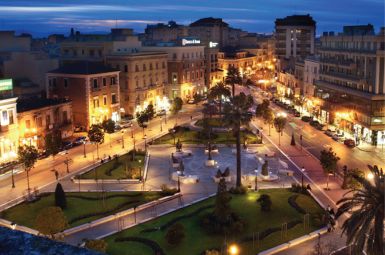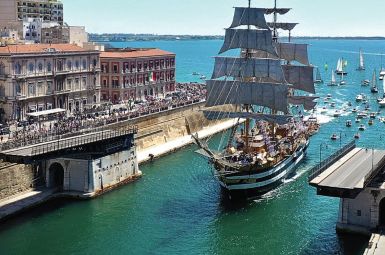
Altomonte
Il Borgo di Altomonte
Altomonte: L’Affresco Medievale che Domina la Calabria
Benvenuti ad Altomonte, non semplicemente un borgo, ma una magnifica sentinella di pietra che si erge a custode della storia e dell’arte nel cuore della Calabria cosentina. Inserito di diritto nel prestigioso circuito de “I Borghi più Belli d’Italia”, Altomonte è un’esperienza sensoriale e culturale che vi farà viaggiare indietro nel tempo, proiettati in un Medioevo di autentica bellezza.Lo Scenario: Una Vedetta tra Mare e Montagna
La sua posizione è parte integrante del suo fascino: Altomonte è appollaiato su una collina che offre un panorama che spazia dal verde rigoglioso della Valle dell’Esaro e delle propaggini del Parco Nazionale del Pollino fino al blu intenso del Mar Ionio e della Piana di Sibari. Questa veduta straordinaria è la perfetta cornice per il suo centro storico quasi intatto.I Capolavori d’Arte: L’Eredità Angioina
Altomonte fiorì in particolare sotto la dominazione angioina, periodo che le ha lasciato in eredità gioielli architettonici di valore inestimabile:La Chiesa di Santa Maria della Consolazione
Considerata uno dei maggiori e più puri esempi di architettura gotico-angioina in Calabria, questa chiesa è il simbolo artistico del borgo. La sua facciata maestosa, il rosone finemente lavorato e l’interno elegante con volte a crociera e un prezioso sarcofago trecentesco, la rendono una tappa obbligata per ogni amante dell’arte.Il Castello Normanno-Svevo
Dominando la parte più alta del borgo, il Castello Feudale testimonia l’importanza strategica di Altomonte. Edificato nel XII secolo e poi rimaneggiato, fu residenza di potenti casate come i Sangineto e i Ruffo. Oggi, pur ospitando servizi ricettivi, conserva intatto il suo fascino di antica fortezza, offrendo un punto di osservazione privilegiato sul paesaggio circostante.Il Complesso di San Francesco e il Museo Civico
L’ex Convento dei Domenicani, che ha avuto tra i suoi illustri ospiti il filosofo Tommaso Campanella, oggi ospita la sede del Municipio e il Museo Civico. Quest’ultimo custodisce una collezione d’arte sacra e non solo, con opere di eccezionale valore, tra cui l’iconica tavola di San Ladislao d’Ungheria attribuita a Simone Martini, e altre della scuola di Giotto, confermando Altomonte come un vero crocevia culturale del Sud Italia.Il Gusto e la Vita Slow
Altomonte si fregia anche dei titoli di “Città Slow” e “Città del Pane”, onorificenze che ne sottolineano la qualità della vita e l’eccellenza enogastronomica. Qui, i sapori della terra — dall’olio extravergine d’oliva ai salumi e formaggi locali — si sposano con una tradizione culinaria ricca e genuina.- Festival Euromediterraneo: Altomonte è anche un vivace centro culturale, sede di uno dei più importanti eventi estivi del Sud Italia, una rassegna che celebra l’arte, la musica, il teatro e la cultura in ogni sua forma.
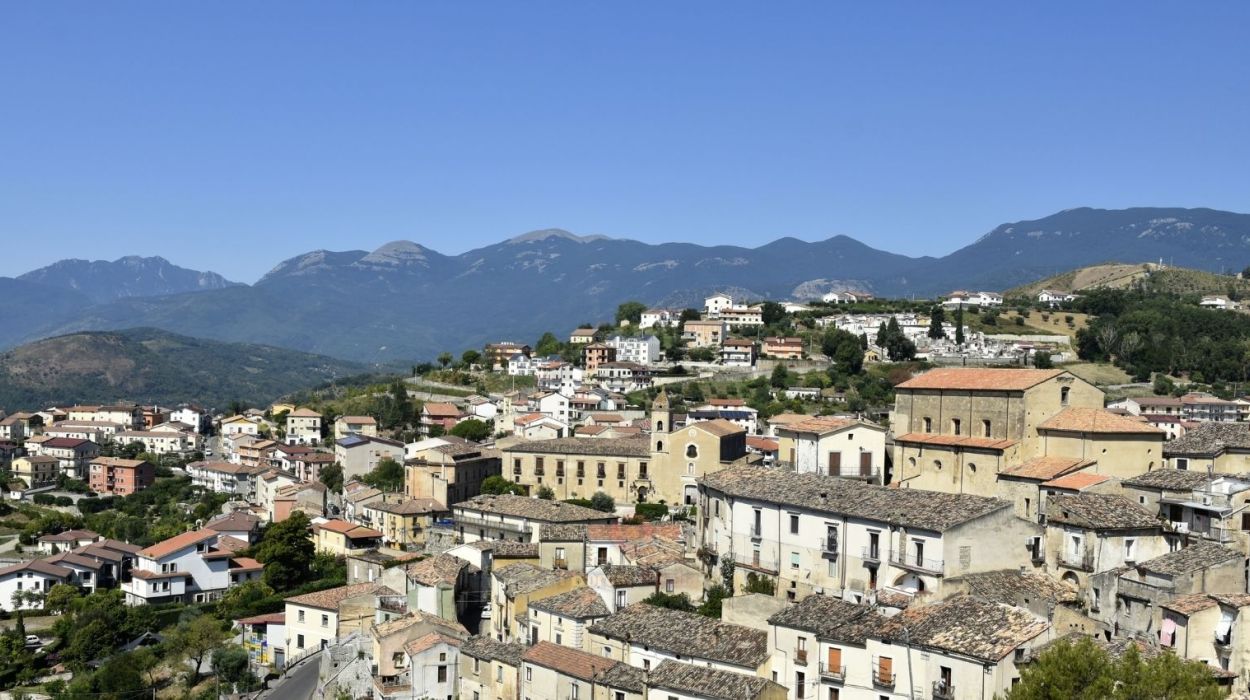
Il Borgo d’Italia
tutto da scoprire ed esplorare
Monumenti
Altomonte Monumentale: L’Arte Angioina Incisa nella Storia
Altomonte, gioiello incastonato nella provincia di Cosenza, è una città che si svela come un vero e proprio museo a cielo aperto. I suoi monumenti sono i testimoni silenziosi di un glorioso passato, in particolare sotto la dominazione Angioina, che trasformò il borgo in uno dei centri artistici e culturali più significativi del Meridione italiano.
1. La Chiesa di Santa Maria della Consolazione: L’Icona Gotica
È il simbolo artistico per eccellenza di Altomonte e uno dei massimi esempi di architettura gotico-angioina in Calabria.
- Maestosità Architettonica: La chiesa colpisce immediatamente per l’imponenza della sua facciata, arricchita da un magnifico rosone e da eleganti elementi decorativi. La sua costruzione, fortemente voluta da Filippo di Sangineto nel XIV secolo, segnò l’apice della potenza feudale del borgo.
- Tesori Interni: L’interno, a navata unica con volta a capriate, custodisce opere preziose, tra cui un coro ligneo finemente intagliato e, in particolare, l’antico Sarcofago di Filippo di Sangineto, che testimonia il profondo legame tra la nobiltà locale e il mecenatismo artistico.
2. Il Castello Normanno-Svevo: Sentinella del Paesaggio
Eretto su uno sperone roccioso, il Castello Feudale domina l’intero abitato e la Valle dell’Esaro, offrendo una visione che spazia fino al Mar Ionio.
- Radici Antiche e Trasformazioni: Sebbene le prime fortificazioni risalgano all’epoca Normanna (XII secolo), la struttura fu ampliata e riadattata nei secoli successivi, diventando la sontuosa residenza di famiglie nobili come i Sangineto e i Ruffo.
- Strategia e Panorama: La sua funzione strategica era cruciale per il controllo del territorio. Oggi, pur ospitando servizi moderni, conserva le sue mura possenti e offre dai suoi affacci un panorama mozzafiato, incorniciando il centro storico sottostante.
3. Il Complesso di San Francesco e il Polo Culturale
Adiacente alla Chiesa di Santa Maria della Consolazione si trova l’antico complesso monastico che un tempo ospitò i frati Domenicani.
- Sede Istituzionale e Storica: L’ex Convento, notevole esempio di architettura monastica, oggi è la sede del Municipio di Altomonte, rendendolo uno degli edifici comunali più affascinanti d’Italia.
- Museo Civico: Il complesso ospita anche il Museo Civico, custode di una ricca collezione artistica che include l’opera attribuita a Simone Martini (San Ladislao d’Ungheria) e preziose tavole di scuola giottesca. Questo museo è una tappa fondamentale per comprendere il ruolo di Altomonte come centro propulsore dell’arte medievale nel Sud.
Completano il quadro monumentale la Torre dei Pallotta (risalente all’XI secolo), antica struttura difensiva, e le diverse chiese minori che punteggiano il centro storico, come la Chiesa di San Francesco di Paola, arricchendo la passeggiata in un tessuto urbano di rara omogeneità storica e fascino.
Curiosità
Altomonte: 5 Curiosità del Borgo che Sfidò il Tempo
Altomonte, arroccato sulle colline del Cosentino, non è un semplice borgo medievale; è una capsula del tempo che custodisce storie e primati unici. Dalle sue origini antichissime al suo ruolo di capitale artistica del Basso Medioevo, ecco alcune curiosità che svelano l’anima di questa “sentinella di pietra”.
1. Il Nomen Omen: Non si è Sempre Chiamata Altomonte
Il nome che ammiriamo oggi è relativamente recente e fu un atto di celebrazione.
- Da “Brakhalla” ad “Altomonte”: In origine, nel periodo Normanno (XI secolo), il borgo era noto come Brakhalla (o Brahalla), un nome di probabile origine araba che significava forse “benedizione di Dio”.
- Il Tuffo nel Tevere: Fu solo nel 1345 che il nome cambiò in Altomonte, per volere della Regina Giovanna I. Questo cambio onorava la famiglia feudataria dell’epoca, i Sangineto, il cui castello principale si trovava sul monte di Altoflumine (Alto-fiume), in Basilicata. Il nome attuale celebra letteralmente la sua posizione elevata.
2. Capitale dell’Arte Angioina in Calabria
Altomonte non fu solo un centro strategico, ma una vera e propria officina culturale nel XIV secolo, grazie al mecenatismo illuminato dei Sangineto.
- Un Polo Gotico: La Chiesa di Santa Maria della Consolazione è considerata il più alto esempio di Gotico Angioino in Calabria. Questa eccellenza architettonica dimostra quanto il borgo fosse connesso ai grandi flussi artistici del Regno di Napoli.
- Tesori da Maestri: La ricchezza artistica è confermata dalle opere custodite nel Museo Civico, tra cui spicca la tavola di San Ladislao d’Ungheria, attribuita a Simone Martini, uno dei maestri indiscussi della scuola senese.
3. Il Filosofo Ribelle e il Convento
Il Convento dei Domenicani (oggi sede del Municipio) ha ospitato una figura cruciale e controversa del pensiero italiano.
- La Sosta di Campanella: Verso la fine del XVI secolo, il celebre filosofo Tommaso Campanella soggiornò nel cenobio domenicano di Altomonte. Fu qui, in questo tranquillo borgo, che il filosofo di Stilo sviluppò e scrisse alcune delle sue prime opere, gettando le basi del suo pensiero che lo avrebbe portato alla Riforma in Calabria e a gravi processi.
4. Un Triplo Riconoscimento di Qualità
Altomonte non brilla solo per storia e arte, ma anche per la qualità della vita e delle sue produzioni.
- Borgo Slow e del Pane: Il comune è stato inserito nel prestigioso circuito de “I Borghi più Belli d’Italia” ed è orgoglioso di fregiarsi anche dei titoli di “Città Slow” (per il suo ritmo di vita) e “Città del Pane” (per l’eccellenza della sua panificazione tradizionale). Questa triplice certificazione ne fa un’eccellenza a tutto tondo.
5. La “Valle Senese” in Calabria
Passeggiando tra i vicoli e osservando il paesaggio circostante, Altomonte evoca un’atmosfera inaspettata.
- Paesaggio Toscano: Per la sua configurazione collinare, con il borgo adagiato in cima e circondato da uliveti e vigneti che degradano dolcemente, Altomonte è spesso descritto come un “piccolo pezzo di campagna senese calato nel bel mezzo del Mediterraneo”. Questo rende la vista dal Castello una delle più sorprendenti e inusuali della Calabria.
Personaggi
Voci da Altomonte: I Figli Illustri di un Borgo d’Arte
Altomonte, con la sua ricca storia e l’eredità artistica angioina, è stata una culla di talenti e figure che hanno lasciato il segno ben oltre i confini della Calabria. Sebbene la sua fama sia legata più ai grandi mecenati che ai nativi illustri, il borgo ha dato i natali a personalità che hanno onorato la cultura, l’arte e la spiritualità.
Ecco un omaggio ai personaggi che hanno contribuito a scrivere la storia e l’identità di Altomonte.
1. Altomonte: La Culla di Famiglie Nobili e Mecenati
Più che figure singole, la rilevanza storica di Altomonte è legata alle grandi casate che vi hanno risieduto, trasformandola in un centro di potere e cultura.
- Filippo di Sangineto (XIV Secolo): Sebbene non nativo, è il personaggio più strettamente legato allo splendore monumentale di Altomonte. Fu lui, Signore di Brahalla (antico nome di Altomonte) per volere di Roberto d’Angiò, a promuovere la costruzione della magnifica Chiesa di Santa Maria della Consolazione, uno dei capolavori del Gotico Angioino in Calabria. Il suo mecenatismo artistico è il motivo per cui Altomonte è oggi un punto di riferimento per l’arte medievale.
- La Famiglia Ruffo e Sanseverino: Queste potenti famiglie feudali, che si successero nel dominio del Castello, hanno plasmato l’assetto sociale e urbanistico del borgo, mantenendo Altomonte un polo di influenza per secoli.
2. Altomonte: L’Umanista e l’Artista del ‘900
Concentrandoci sulle personalità nate o di origine altomontese che hanno avuto rilievo nella storia più recente:
Antonio Altomonte (Scrittore e Giornalista)
Una delle figure culturali più rilevanti del XX secolo con radici nel borgo è il giornalista e scrittore Antonio Altomonte.
- Maestro della Narrativa e del Giornalismo: Sebbene la sua attività si sia svolta principalmente a Roma e Firenze, Altomonte è stato un autore prolifico, noto per la sua eleganza stilistica e la capacità di analizzare la società contemporanea. La sua opera letteraria, che spazia dalla narrativa storica a romanzi di introspezione, gli ha valso importanti riconoscimenti, contribuendo a diffondere un’immagine intellettuale della Calabria.
Principio Federico Altomonte (Pittore)
Il borgo ha espresso talenti anche nelle arti visive, come nel caso di questo artista attivo nel periodo delle avanguardie.
- L’Espressione Futurista: Pittore del ‘900, Principio Federico Altomonte è una figura che si è distinta nel panorama artistico, abbracciando in parte le correnti del Futurismo e dell’arte espressionista, mantenendo un legame sottile ma tangibile con la sua terra d’origine.
Altomonte si presenta, dunque, come un luogo la cui ricchezza non è solo nelle figure dei nativi, ma nella capacità di attirare, ospitare e ispirare personaggi cruciali della storia, dal filosofo Tommaso Campanella ai maestri dell’arte medievale, trasformando il borgo stesso nel suo monumento più grande.
Ricette Tipiche
Altomonte a Tavola: Sapori Antichi del Borgo Angioino
La cucina di Altomonte è la perfetta sintesi tra la ricchezza della montagna e la saggezza contadina, un’espressione culinaria che si nutre dei sapori intensi dell’entroterra cosentino, alle porte del Parco Nazionale del Pollino. Qui, i ritmi lenti della vita slow si riflettono in piatti che celebrano la semplicità degli ingredienti locali e le tradizioni più autentiche.
I Primi Piatti: Pasta Fatta in Casa e Sapori di Terra
Ad Altomonte, come in gran parte della Calabria, il pasto inizia con la pasta fresca, rigorosamente lavorata a mano, che sposa condimenti ricchi e robusti.
1. Lagane e Ceci
Un piatto povero nella sua origine ma ricchissimo di gusto, che incarna la tradizione contadina della Valle dell’Esaro.
- Le Lagane: Simili a delle tagliatelle corte e larghe, le lagane sono preparate con un impasto semplice di acqua e farina (spesso farina di grano duro o un mix di farine locali).
- Il Condimento: Vengono immerse in un sugo denso e avvolgente a base di ceci locali (talvolta lasciati interi e talvolta in crema), insaporito con aglio, un generoso filo di olio extra vergine d’oliva della zona e, immancabile, un pizzico di peperoncino piccante (diavulillo), che accende il piatto con il calore tipico calabrese.
2. Maccheroni al Ragù di Maiale
La pasta fresca a forma di ferretto o fusillo è la base per i condimenti delle grandi occasioni.
- Il Formato: I maccheroni (o fileja in alcune zone vicine) sono trafilati al ferro, un formato che cattura magnificamente il sugo.
- Il Ragù: Il condimento è un ragù di maiale lento, preparato con carne di spalla o costine, che sobbolle per ore con pomodoro e aromi, regalando una salsa profonda e saporita, il vero cuore della cucina domenicale.
Le Delizie di Altomonte: Specialità da Non Perdere
La fama di Altomonte come “Città del Pane” e la ricchezza dei suoi prodotti tipici si riflettono in due pilastri della sua gastronomia.
3. Pane di Altomonte e l’Olio EVO
Il pane locale è una vera e propria istituzione, grazie alla sapienza dei fornai e all’uso di grani antichi.
- Il Pane: Caratterizzato da una crosta scura e croccante e una mollica bianca e alveolata, il pane di Altomonte ha un profumo intenso e una lunga conservabilità.
- L’Accoppiata Vincente: Gustarlo è d’obbligo intingendolo nell’olio extra vergine d’oliva locale, prodotto dalle fertili colline che circondano il borgo, per assaporare l’essenza stessa della terra. L’arte qui è la semplicità.
4. La Pignolata
Sebbene diffusa in tutta la Calabria, la pignolata è un dolce tradizionale che ad Altomonte trova la sua celebrazione in molte ricorrenze.
- La Preparazione: Piccoli gnocchetti di pasta fritta, simili a pigne in miniatura, vengono assemblati e ricoperti da una glassa al miele (melata locale) o, nella variante più moderna, da glassa al cioccolato e limone.
- Dolce Festivo: È il finale ideale per un pranzo tradizionale, un omaggio alla dolcezza della terra e alla maestria pasticcera del borgo.
I piatti di Altomonte sono un invito a riscoprire i sapori forti, puliti e onesti della Calabria interna. Ogni ricetta è una narrazione di tradizione, resilienza e amore per la terra, da gustare con la calma che solo un Borgo Slow sa offrire.
